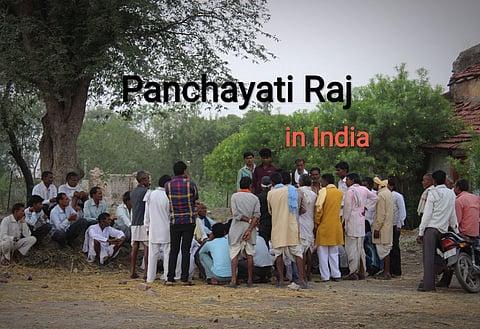April 24 is celebrated as National Panchayati Raj Day. Panchayati Raj reform is also one of the main demands of public candidate campaign working for nationwide democratic reforms. We believe that Panchayati Raj should be given real autonomy and the structure of Panchayati Raj should be strengthened, so that it can do the work of 'Third Government' in true sense.
"True democracy does not run the state sitting at the center, but it runs with the cooperation of every person in the village."
These words of Mahatma Gandhi indicate that he saw the independence of India as the independence of the villages of India, so he believed that the independence of India is incomplete until the villages of India do not get independence. About 30 years ago, the new Panchayati Raj was implemented in the country after the announcements like 'freedom of villages', that is, direct participation of people in democracy and decentralization of power in the true sense of Gandhiji. However, it is a very different matter that the important aspects keeping in mind the Panchayati Raj was implemented, it still seems to be standing far away from those important aspects.
The word Panchayat is derived from the combination of two words 'Panch' and 'Ayat'. Pancha means five and Aayat means assembly. Panchayat is said to be an assembly of five members, who work for the development and upliftment of the local communities and solve many types of disputes at the local level.
The history of Panchayats in India is very old. In ancient times, the panchayat used to decide the mutual disputes, but during the British colonial rule, the responsibility of all the work went into the hands of the provincial governments. After independence, the subject of Panchayati Raj was actively debated in the Constituent Assembly during the framing of the Constitution. Many members stressed the importance of giving due place to villages and gram panchayats in the constitution. As a result, Article 31-A was added which states that 'the State shall take steps for the organization of village panchayats and endow them with such powers and authority as may be necessary to enable them to function as units of self-government'. . This article was later renumbered as article 40 and became part of the Directive Principles of State Policy of the Constitution. However, the necessary legislation to give effect to the Panchayats was not enacted immediately.
The Community Development Program was started in India in 1952. But, the general public could not directly connect with this program. To solve this problem, a committee was constituted in 1957 under the chairmanship of Balwant Rai Mehta. And this committee in its report advocated a three-tier Panchayati Raj system for democratic decentralisation. The National Development Council also accepted the recommendations of this committee as correct.
Based on the recommendations of the Balwant Rai Mehta Committee, Andhra Pradesh was the first to implement democratic decentralization in some areas. Seeing its success, the first state of Rajasthan formally started Panchayati Raj on October 2, 1959 in Nagpur district. After that other states also implemented the Panchayati Raj system, but this effort did not get as much success as was expected.
Between 1959 and 1990, many committees were formed and many schemes were started, but many of them did not get much success. In the year 1985 G.V. The K Rao committee recommended making the district the basic unit of planning and holding regular elections, while the L. The L. M. Singhvi Committee (1986) recommended constitutional status and allocation of more financial resources to the Panchayats to strengthen them. The amendment phase began with the 64th Amendment Bill (1989) which was introduced by the Rajiv Gandhi government with the aim of empowering the Panchayat Raj institutions but the bill could not be passed in the Rajya Sabha.
The Constitution (74th Amendment) Bill (a combined bill for Panchayat Raj Institutions and Municipalities) was introduced in the year 1990 but it was never brought up for discussion in the House. Subsequently, a comprehensive amendment in the form of the 72nd Constitutional Amendment Bill was introduced in September 1991 during the tenure of Prime Minister PV Narasimha Rao.
The 73rd and 74th Constitutional Amendments were passed by the Parliament in December, 1992. Through these amendments, the foundation of local self-government was laid in rural and urban India. These laws came into force on 24 April 1993 as the Constitution (73rd Amendment) Act, 1992 and on 1 June 1993 as the Constitution (74th Amendment) Act, 1992.


